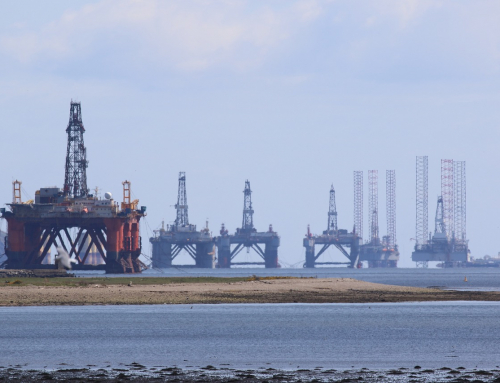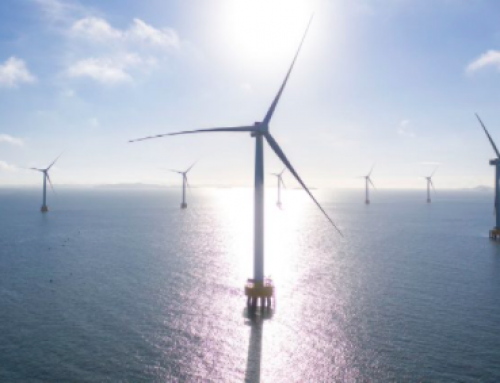By Martin Clark
London AIM-listed Angus Energy has shrugged off a lacklustre share price of late with a strong production rise over recent months which should equate to a growth in future sales.The company holds a complementary portfolio of clean gas development assets, onshore geothermal projects and legacy oil-producing fields.That includes its flagship Saltfleetby gas field in East Lincolnshire.
When discovered in 1996 it was the country’s largest onshore gas field, with production commencing three years later, in 1999.Since then, the field has gone on to become an important strategic national energy asset, producing steady local gas flows for the UK market.

and gas volumes are now on the rise after a series of new projects and investments at the site, set to positively impact both production and cash flow from operations. Angus Energy stated recently that it had successfully completed remedial works at its field after discovering performance issues with a second compressor engine.
For a short time, the site was operating with a single compressor at an average daily rate of 6mmscfd, some way down on more impressive recent levels. The feld has now returned has now returned Angus Energy lifts gas production from onshore Saltfleetby field
Energy has shrugged off a lacklustre share price of late with a strong production rise over recent months which should equate to a growth in future sales.The company holds a complementary portfolio of clean gas development assets, onshore geothermal projects and legacy oil-producing fields.That includes its flagship Saltfleetby gas field in East Lincolnshire.
When discovered in 1996 it was the country’s largest onshore gas field, 6with production commencing three years later, in 1999.Since then, the field has gone on to become an important strategic national energy asset, producing steady local gas flows for the UK market.
And gas volumes are now on the rise after a series of new projects and investments at the site, set to positively impact both production and cash flow from operations. Angus Energy stated recently that it had successfully completed remedial works at its field after discovering performance issues with a second compressor engine.
For a short time, the site was operating with a single compressor at an average daily rate of 6mmscfd, some way down on more impressive recent levels.The field has now returned to dual compressor operation with all three wells on stream, the company reported earlier this month.
During the preceding quarter from April to June, peak daily production rates hit 9.3 mmscfd — together with a new record hourly flow rate of 10.6 mmscfd, hinting at the area’s potential. Average daily rates for the overall period stood at 6.8 mmscfd due to a new well only coming into production half way through the quarter.
Liquid gas condensates production also averaged 160 barrels per day.
In a 3 July update, Angus Energy added that its new B07T well was settling in, with the construction of a permanent flowline now underway, with a target date of end August set for commissioning.
The investment saw gas volumes produced and sold from the field equal 6.8 mm therms for the three months combined, or an average of 2.3 mm therms per month as against hedged volumes of 1.75 mm therms per month for the quarter.Produced gas and condensate is piped via a 10” pipeline to the nearby Theddlethorpe Gas Terminal for processing and despatch to the National Grid.
On 30 June, unveiling its interim results for the six-months up to 31 March, the company also reported that it had met its production target of 9.5 mmscfd, broadly equivalent to a sales volume of 3 mm therms a month.The forward Heren NBP National Balancing Point) gas price curve is presently averaging over £1.00 per therm over the next six monts
.The higher, steady production rates and cash flow from operations should help to boost finances at the company as it sets its sights on new opportunities.As well as Saltfleetby, Angus Energy majority owns and operates conventional oil production fields at Brockham and Lidsey, and has a 25 per ent interest in the Balcombe Licence. The company recently appointed Richard Herbert, a former head of exploration at BP, as its new CEO, and appears keen to explore both organic and inorganic growth opportunities following the completion of work at Saltfleetby.
It has tied down a further six-month bridging facility, worth £6m, to help provide working capital allowing Angus to close out the final rolled hedges arising from late production in Q3 2022 as well as funding to evaluate acquisitions and the development of storage at Saltfleetby.
The company stated that the capital boost demonstrates continued support from investors and the direction of the new management to deliver returns and growth.
During the preceding quarter from April to June, peak daily production rates hit 9.3 mmscfd — together with a new record hourly flow rate of 10.6 mmscfd, hinting at the area’s potential.Average daily rates for the overall period stood at 6.8 mmscfd due to a new well only coming into production half way through the quarter.
Liquid gas condensates production also averaged 160 barrels per day.
In a 3 July update, Angus Energy added that its new B07T well was settling in, with the construction of a permanent flowline now underway, with a target date of end August set for commissioning.
The investment saw gas volumes produced and sold from the field equal 6.8 mm therms for the three months combined, or an average of 2.3 mm therms per month as against hedged volumes of 1.75 mm therms per month for the quarter.Produced gas and condensate is piped via a 10” pipeline to the nearby Theddlethorpe Gas Terminal for processing and despatch to the National Grid.
On 30 June, unveiling its interim results for the six-months up to 31 March, the company also reported that it had met its production target of 9.5 mmscfd, broadly equivalent to a sales volume of 3 mm therms a month.The forward Heren NBP National Balancing Point) gas price curve is presently averaging over £.00 per therm over the next six months
.The higher, steady production rates and cash flow from operations should help to boost finances at the company as it sets its sights on new opportunities.As well as Saltfleetby, Angus Energy majority owns and operates conventional oil production fields at Brockham and Lidsey, and has a 25% interest in the Balcombe Licence. The company recently appointed Richard Herbert, a former head of exploration at BP, as its new CEO, and appears keen to explore both organic and inorganic growth opportunities following the completion of work at Saltfleetby.
It has tied down a further six-month bridging facility, worth £6m, to help provide working capital allowing Angus to close out the final rolled hedges arising from late production in Q3 2022 as well as funding to evaluate acquisitions and the development of storage at Saltfleetby Angus Energy lifts gas production from onshore Saltfleetby field





